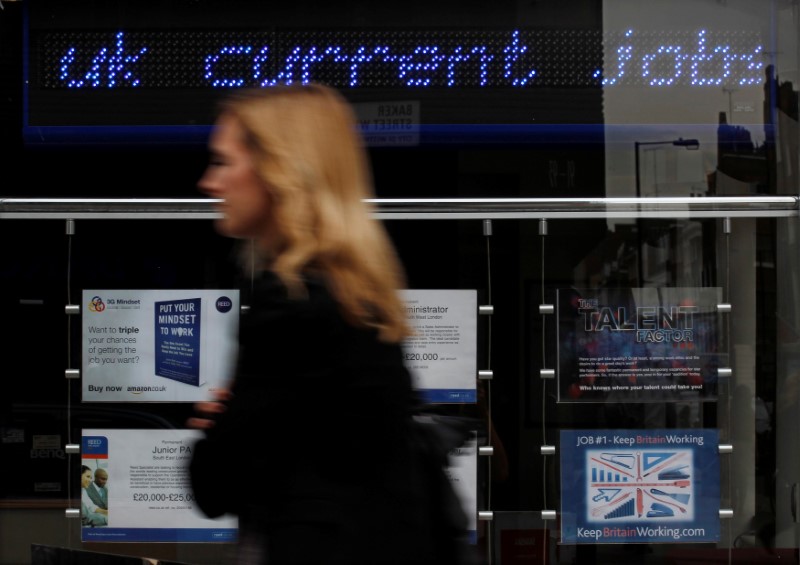By Geoffrey Smith
Investing.com -- The number of people claiming unemployment benefits in the U.K. rose again in October, although by less than feared, as the British economy slid towards what is likely to be a long recession.
The claimant count rose by 3,300 from September, well below the 17,300 consensus forecast, underlining that the labor market remains tight due to the lack of available workers even as activity slows. There was also a big downward revision to September's figures to show a rise of only 3,900, rather than the 25,500 initially reported.
However, momentum in job creation appeared to weaken further, with companies struggling to find workers despite the economic slowdown. The Office for National Statistics said vacancies fell for the fourth month in a row, by 46,000, but remained at a historically high level of 1.225 million in the three months through October.
There was a further indication of the labor market's tightness in that average earnings growth excluding bonuses accelerated in the year through September - the last month for which data are available - to 5.7%, from an upwardly revised 5.5%. The ratio of vacancies to unemployed people stayed at 1.0, another historically high figure that spells labor shortages across the economy.
Even though earnings are still running well below an inflation rate of around 10%, the figures indicate little slack in the economy that would allow the Bank of England to stop its sequence of interest rate rises, and reaffirmed a trend of labor shortages. More people dropped out of the labor force, pushing the economic activity rate up by 0.2% to 21.6%, thanks to another rise in long-term sickness which now stands at 363,000.
The Office for National Statistics had said last month that the phenomenon of "long COVID" had contributed to the rise in long-term sickness, estimating that around 75,000 people were suffering long-term effects from the coronavirus in the second quarter. However, the biggest rise in recent months has been due to "other" forms of illness sickness, leaving a degree of uncertainty over the underlying cause.
The ONS noted that the problems of the country's National Health Service in working through a backlog of chronic conditions after the pandemic may also have contributed to the overall increase, given that median referral times for procedures have almost doubled in the last two years to around 14 weeks.
